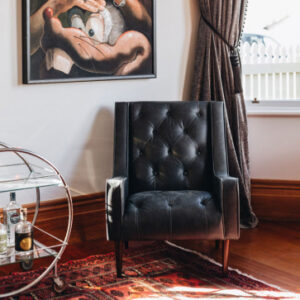Description
Care:Whilst leather is durable it does need care to help prevent damage from drying out and fading. The following tips will help you care for your leather furniture and add years of life, while enjoying it every day:
Regularly clean and moisturise leather upholstery to maintain its appearance. In extreme climates you’ll need to moisturise the leather more often. Check the care label on your furniture for more information.
Wipe up water spills straight away, don’t let it soak in. Water based stains will leave a mark.
Clean up food spills straight away. Food oils can permanently bond with the leather.
Vacuum regularly with a soft upholstery attachment. Wipe over the leather with a damp, soft, clean cloth weekly. Dirt and grime can act as abrasives on leather.
If you can, rotate the cushions to even out the wear.
Use retailer recommended leather care and cleaning products every 8 to 12 weeks. Never attempt to use chemical spot cleaners or any soap. Use only dry or a lightly damp cloth, do not rub
Stains that are water-soluble can be dabbed lightly and absorbed with a clean sponge or paper towel
Don’t place leather furniture near direct light or heaters as they can fade and damage the leather.
Try not to get body oils on the leather, as they can oxidise and change the colour of the leather. Special care is also required if anyone sitting on the furniture is taking medication. Some medication (specifically heart medication, blood pressure, chemotherapy and diabetes tablets) can be excreted through the pores and may damage the surface coating of your leather. Take measures to protect your leather from prolong direct exposure if you or any persons using the furniture are taking such medication. Excessive exposure to high levels of body perspiration can damage the surface coating of your leather. If your leather is going to be exposed to excessive perspiration ensure that it is cleaned more frequently
Special Offer



